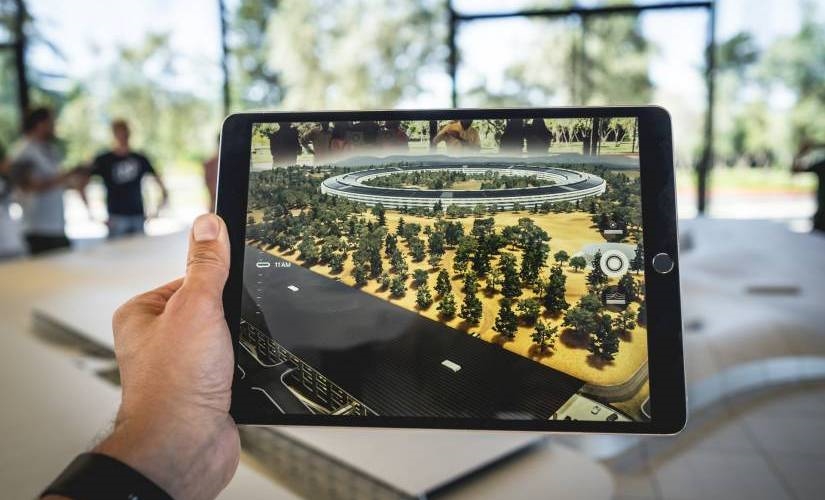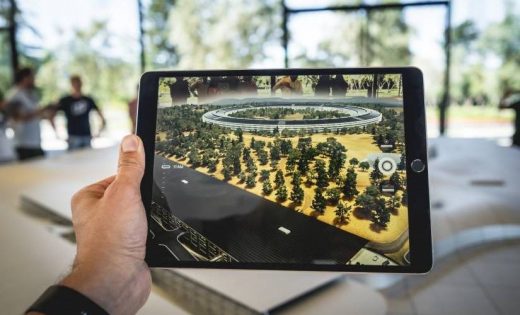5 Exciting Real-World Uses for AR and IoT
5 Exciting Real-World Uses for AR and IoT

People often discuss the Internet of Things (IoT) and augmented reality (AR) separately, and the applications are frequently compelling. However, IoT and AR could have even more potential when used together in the same projects.
Such combinations have not quite reached mainstream popularity, but they’re getting more popular. The results of AR IoT projects can be impressive when people have the resources and forward-thinking mindsets to depend on both technologies at once.
1. Enabling Real-Time Navigation and Location-Based Information
Professionals who develop mobile apps must stay aware of customer needs and preferences, as well as how technology could help make the most of their experiences. Often, the IoT and AR get integrated into mobile apps, allowing brand leaders to capitalize on opportunities.
One of the significant benefits of the IoT is the ability to learn more about customers in non-intrusive ways. Consider a case where a retail manager discovers many customers initially land on a website after saying a smart speaker prompt.
In that case, the store’s tech team might develop a smart speaker skill that makes it easier for people to find what they need while using verbal commands. Some believe voice-enabled device interactions will eventually replace customer service representatives and chatbots.
The opportunities span beyond retail, too. Factory leaders might have employees use connected wearables to determine the riskiest or most injury-prone activities. Then, they could make process changes to keep people safer. However, when it comes to using the IoT and AR together, the possibilities become especially apparent for helping people navigate unfamiliar surroundings.
One discount pharmacy chain planned to install thousands of IoT sensors in retail stores and use them along with AR smartphone apps to give store guidance. Then, people could quickly find what they needed, even if they had never visited that particular pharmacy. That outcome would reduce frustration and increase the chances of people visiting again.
There have also been AR IoT projects in the research phase showing what’s possible. One involved using connected and dynamic LED markers in a smart city to give people safer walking paths. Another portion of the discussion volunteered ideas such as traffic management and accessibility.
2. Filling Talent and Training Gaps
It’s challenging to cover all the things today’s professionals need to know through traditional learning options like textbooks and lectures. As beneficial as the Internet of Things is, it can also raise attack risks for the companies using it. One study of businesses using IoT solutions found only 37% of respondents tracked cyber exposures caused by third-party entities.
However, companies specializing in cybersecurity education can modernize their curriculums by offering modules enhanced with AR. Then, when people are ready to transition from training to the real world, they should be better equipped to detect, prevent, and address online threats.
The manufacturing sector is also facing skills shortages. However, some leaders in the space have already recognized how AR IoT projects could close the gap. More specifically, it could improve training, making it more relevant to current and future generations of workers. When people feel their workforce education is engaging and specific to their roles, they’ll be more likely to stay in those positions. They may even recruit friends to join them at their workplaces.
Using the IoT and AR for training could also help people correct mistakes faster. Some workplaces have employees use wearables to track metrics like their body position while lifting heavy items or sitting at a computer. Those IoT devices could detect issues and deliver real-time instructions on how to make corrections. That approach helps them create good, lasting habits.
Combining the IoT and AR could also help company leaders identify training opportunities. Many IoT sensors constantly collect data, so they can show which processes have the highest error rates. Those areas could be the best ones to target if developing an AR-based training module or program.
3. Improving Maintenance Calls With AR IoT Projects
The IoT has dramatically enhanced how company leaders can keep their critical equipment running smoothly. When smart sensors collect 24/7 data, maintenance teams can notice problems long before they cause disruptive failures. Deploying a predictive maintenance approach could bring savings up to 40% more than reactive strategies. Relying on augmented reality with the IoT enables technicians to see what’s happening with a machine without going on physical site visits.
That’s why some people think of augmented reality as the IoT’s interface. When someone’s working with a complicated piece of machinery, they’d understandably appreciate the guidance that helps them know which component needs attention. The IoT can provide that while its sensors collect the data telling the technician something’s amiss.
This combination of IoT and AR was also valuable during the COVID-19 pandemic. One company unveiled a remote assistance technology to 200 employees during the health crisis so they could continue doing service calls without in-person visits. Seeing a machine remotely with help from AR could also save time and money — significant benefits when the malfunctioning equipment is critical for business.
When people do in-person checks, they often have to investigate the issue, then leave to order a part before returning to install it. If IoT sensors and AR show what’s happening earlier, the process would likely become more efficient.
Another benefit of using AR and the IoT together is newer technicians could get real-time help. It’s easy to envision the benefits of diagnosing a problem and using an AR app to pull up a manual or checklist to address the matter thoroughly.
4. Using the IoT and AR During Emergency Evacuations
Although people may carefully read the recommendations for staying safe when responding to emergencies, it can be hard to see how the things they learn translate to real-life situations. AR IoT projects could take people through exercises like using a fire extinguisher or finding the safest exits by tracking their real-time positions and giving feedback.
Some cloud-based IoT solutions help property owners and managers assess the real-time risks from issues like fires, gas leaks, or electrical problems. Then, if those products have artificial intelligence features, they can mitigate the threats. How could someone use augmented reality with those IoT platforms? One schoolboy’s inspiring project relies on AR to project a green path on someone’s real-world surroundings to help them escape a fire.
The tool can also point to the nearest fire extinguishers or alarms. That’s vital, especially since people can become disoriented when dealing with fire-related emergencies. The person working on improving the tool plans to add a “rescue me” button to the AR app. It would pass the individual’s location to firefighters, helping them get to safety as soon as possible. That addition would also show live-streamed footage from the person in distress, courtesy of their smartphone’s camera.
Some AR IoT projects serve multiple purposes to keep people safer in dire situations. One system detects gas and fire 5 to 30 centimeters away from connected sensors. It sends emergency messages to people’s smartphones to alert them to the danger. Then, an AR component guides a person from their present location through an evacuation route to a designated safe place.
These solutions will become even more applicable as people build larger, taller buildings to cope with urban growth. Getting occupants to safety will always be necessary — and these options help.
5. Supporting First Responders’ Resource Utilization
First responders have the incredibly challenging task of being the earliest individuals to arrive at the scenes where people are injured, ill, or suffering some other kind of distress. Besides figuring out the fastest way to reach destinations, they also have to contend with factors such as the weather and traffic.
A project called the CHARIoT Challenge aimed to combine AR with the IoT to assist first responders with their already-demanding jobs. The IoT prong of the initiative improved situational awareness by providing previously unavailable information. Then, the AR aspect gave dispatchers actionable data to support public safety. For example, the AR interface could make finding the fastest routes to the scene easier by helping responders avoid traffic backups.
The people working on this project demonstrated how it could work in various situations, including a wildfire and an active shooter incident. First responders never know what they might encounter while attending to an emergency. Any AR and IoT platforms must develop to help them account for this reality.
The IoT and AR Can Be a Great Pairing
It takes time and financial resources to determine the best ways to combine augmented reality with the Internet of Things. However, it’s helpful that both technologies are becoming more widely utilized and available in today’s society. This means it should be easier to discover viable use cases and the technology providers that can bring ideas to life.
People thinking about pursuing AR and the IoT should have clear ideas of what they want to achieve and expectations about how the technologies can meet those needs. Then, decision-makers will be more likely to see their tech investments pay off and have meaningful impacts.
Featured Image Credit: Patrick Schneider; Provided by the Author; Thank you!
The post 5 Exciting Real-World Uses for AR and IoT appeared first on ReadWrite.
(30)


